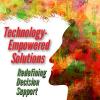Business Transformation Requires Transformational Leaders
Leadership and teaming skills are front and center in times of rapid change. Meet today’s constant disruption head on with expert guidance in leadership, business strategy, transformation, and innovation. Whether the disruption du jour is a digitally-driven upending of traditional business models, the pandemic-driven end to business as usual, or the change-driven challenge of staffing that meets your transformation plans — you’ll be prepared with cutting edge techniques and expert knowledge that enable strategic leadership.
Subscribe to Arthur D. Little's Culture & Leadership Newsletter
Insight
In this Advisor, we describe some of the more popular cognitive development platforms and services that are currently available. Although some cognitive development platforms are available for on-premise deployment, the ongoing trend is for providers to offer their cognitive products in the form of cloud-based environments that give companies the opportunity to license various API-based cognitive services for use in their own enterprise applications or commercial products.
Agile is never done. Without a conscious commitment to sustaining new ways of working, teams can fall back into old habits. Plus, staff turnover or growth brings in individuals who weren’t part of the original shared commitments. Naysayers find evidence that something’s not working — one more reason to subvert change.
Lean companies develop their capabilities and processes continuously as part of their culture. Continuous improvement allows them to align their activities flexibly, according to business strategy. Due to this holistic alignment, these companies achieve relatively high-performance levels compared to their competitors.
Michael Gleeson discusses how public health agencies and emergency managers can leverage the digitization of contact tracing of airline passengers at risk from a biological outbreak. He outlines the increased risk of infection and spread, facilitated by the increased numbers of airline passengers globally. A global framework to prepare for and respond to a biological threat, natural or otherwise, spread via air travel, can be achieved through the digitization of contact tracing using a collaborative approach among the airline industry, public health agencies, and EM practitioners. Identifying and locating at-risk passengers in a fast and efficient manner is paramount to limiting contagion spread.
Theresa Jefferson and Gloria Phillips-Wren discuss modeling for disaster response. This is vital for practitioner/manager decision making to reduce the impact of a natural or man-made disaster. The authors examine the concept of technology embeddedness, noting that emergency managers must trust the technology and show a preference to use it prior to an actual disaster; the time to integrate technology into disaster recovery operations is not during a disaster. They explain how to effectively appropriate, integrate, and use modeling technologies for disaster response and, therefore, recovery.
Frederic Adam and Paidi O’Raghallaigh tackle the current healthcare crisis. They shine a light on the opportunities provided by medical decision support for clinicians and patients and identify a number of challenges to achieving connected health, which they define as “the use of technology-based solutions to deliver healthcare services remotely.” The article proposes a connected health blueprint that may well pave the way for future connected health systems.
The challenge for this issue was to accurately represent the diversity of research in the DSS arena while also giving a glimpse of the cutting-edge DSSs of tomorrow.
Tom Butler and Leona O’Brien provide a timely perspective on AI in the financial industry. Their article provides a pragmatic perspective on the capabilities of AI and pours cold water on some of the hyperbolic claims made about AI and ML in the fintech and regtech space. The authors suggest a direction and guidelines for future research for AI to realize its potential in the financial services sector.






















